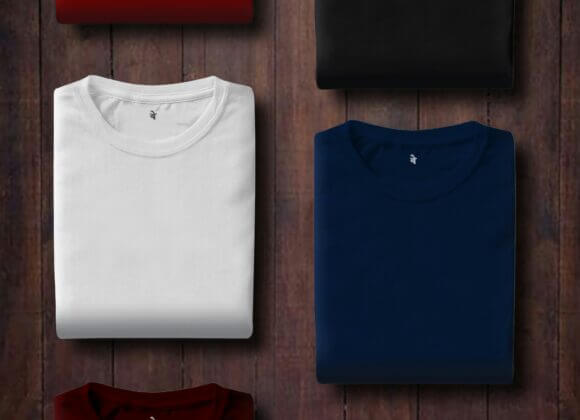Over the course of time, a lot of things accumulate in our closets. But usually only a fraction of it is actually worn. It is therefore advisable to take a critical look at the contents of your wardrobe from time to time and clear it out if necessary. This fresh start doesn’t always work – so we’ll tell you how to make clearing out your closet easier.
“Less is more” and “Order is half the battle” – many of us have known these sayings since childhood. And even if we can’t and don’t want to hear them anymore, we should still admit to ourselves: There really is a grain of truth in these truisms. Those who get rid of unnecessary baggage feel freer. At the same time, there is also room for new things. It is also easier to maintain an overview. “You can see what you have at a glance, you don’t have to search as much and you save time,” explains organization coach Desiree Schweiger from Simply Organized. Incidentally, a good place to start is your closet. “We’ve all been there: you’re standing in front of a closet that’s filled to bursting point – and you still don’t think you have anything to wear,” says Schreiber.
When is the right time to clear out your closet?
When the time has come, as described above, you should get used to the idea of clearing out your closet. Another good time to take this step is when there is no longer room for anything new in your wardrobe. “Some people also use the change of season to clear out their closet,” says the expert.
How often should you clean out your closet?
Of course, this is up to you, there is no generally applicable rule. “We recommend subjecting your closet to a critical review once a year,” says Schweiger. If there is enough space, there is no need to get rid of clutter.
Which clothes should you sort out?
The basic formula for the decision is: you should let go of everything you didn’t wear last year. “But of course there are exceptions,” says Schweiger. These include the wedding dress or the wedding suit that you don’t want to part with. Just like ball gowns, tuxedos or formal business outfits.
However, you should definitely say goodbye to items of clothing whose best days are over. “Anything that has stains or small holes or is yellowed should be cleared out,” advises Schweiger. The same applies to items of clothing that are scratchy or uncomfortable or have become too small or too big. “In this case, you can still keep your favorite jeans, for example, but experience shows that you will rarely be able to fit into them again,” says the tidying coach. In this context, she has another tip: “Pieces that you don’t want to part with or that you only wear rarely should be moved to the second row so that they don’t get in the way of your everyday life”.
How should you go about clearing out your closet?
“The best thing to do is to clear out the cupboard completely and give it a good clean,” says Schweiger. Then it’s time to categorize: T-shirts, pants, dresses, skirts, suits, shirts, jackets, sweaters, as well as socks, underwear, scarves, ties, belts, shawls and the like are all placed in a pile. Then it’s time to get down to business, namely deciding what can stay and what has to go. As mentioned, the criteria are the fit and condition of the clothes as well as how often they are worn. “It’s best to start clearing out with categories such as socks, underwear or sportswear. These have the least emotional attachment,” says Schweiger.
What to do when in doubt?
The decision to part with your favorite trousers is not always easy. A time capsule may then help: This involves packing those items that you can’t part with just yet in a box or crate and storing them on top of the wardrobe, under the bed or in the cellar, for example. If the items are not missed for a year, they can be safely disposed of at the end of that year.
So how can you organize your closet?
Once you have successfully cleared out your wardrobe, the clothes you want to keep need to be put back in the closet. To keep an overview, Schweiger advises organizing the closet in the categories mentioned above. “Within these categories, I then sort the clothes by color,” she says. For clothes that are stored horizontally, Schweiger uses the filefolding method, in which the clothes are sorted vertically in the closet. T-shirts, sweaters and the like are first folded as normal, but then – depending on the height of the drawer or box – halved or tripled again. This not only provides a better overview of the contents, but the individual items can also be removed much more easily. Incidentally, bed linen and towels can also be stored in this way.

What to do with the discarded clothing?
Clothes that you part with should be given a second life, provided they are in perfect condition. They can be sold, donated or given away, but also upcycled. Even clothes with stains, holes and other damage do not necessarily have to be thrown away straight away, but can be used for cleaning, for example.

Desiree Schweiger is an organization coach/professional organizer and mother of two children. Before founding ‘simply organized’, she taught business subjects at a commercial academy. She has always been a person who loves order, but especially after the birth of her children she realized how important a sophisticated system is. She supports people looking for order, from planning to implementing an individual and efficient organization system, both on site and virtually via video call.
Photos: Simply Organized
Related posts:
Everything all right? Tips for an organized home
11 things you should do first when moving house
Tidiness in the kitchen: how to make the kitchen a feel-good place













